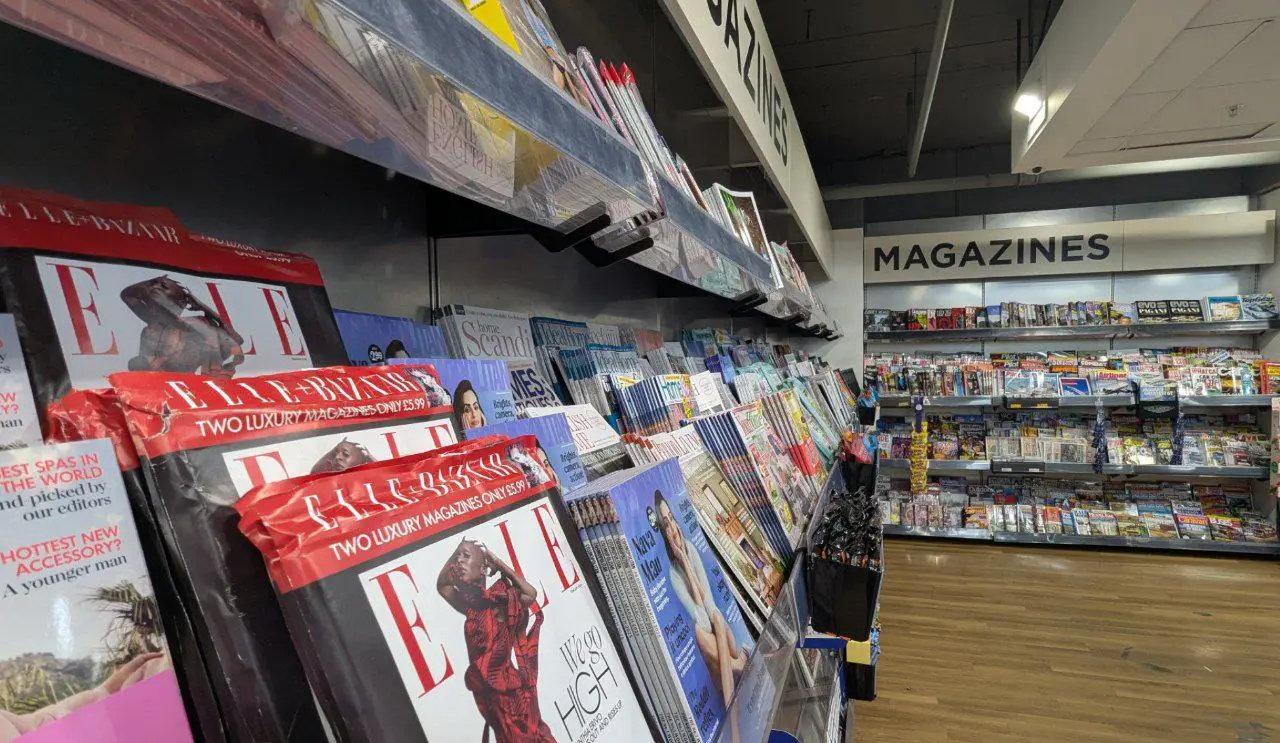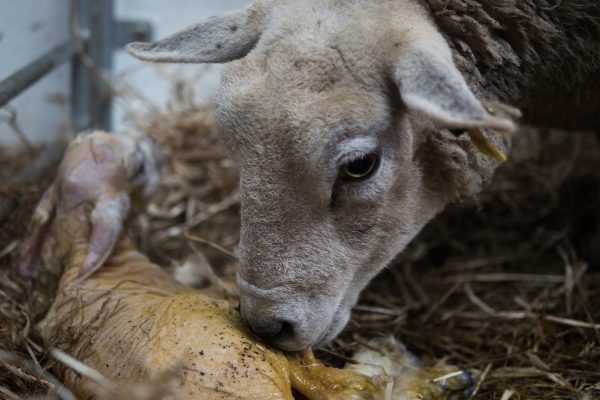Feeding curiosity and bursting bubbles

We are all in our own bubbles. The media we consume is a narrow selection. The algorithms feed us more of what we like; keeping things narrow.
To break out of your content bubble, gain a broader understanding, and exercise your critical thinking skills, you need to add some serendipity and bring things in that are new and different.
But how?
Random magazines
I had an idea that I'd broaden my horizons and feed my curiosity by reading some printed publications that I wouldn't normally have an interest in. Not only would this take me outside my bubble, but it would also take me offline!
The plan was to buy a magazine every time I travelled. A random magazine that was not my usual thing. Magazines! Printed magazines! "How quaint", I hear you cry. "Didn't they die out decades ago?"
Well, not quite.
It's not unusual that I find myself travelling. One place I find myself quite often is Manchester Airport, Terminal 1. T1 at Manchester airport is home, at least for the time being, to a WHSmith that has something which is quite special: It has a surprisingly large offering of magazines.
Actual printed paper magazines.

Just like it used to be decades ago. (Play nostalgic music in your head here.) Magazines and newspapers have been regularly vanishing from shelves as they give up on printed versions. But they live on strong in Manchester T1.
There are hundreds of publications to choose from. Many of them very niche. In an attempt to find a publication to kick off my bubble-breaking experiment, I stood and browsed. Trying to find something "random".
After a while, I'd noted a few initial candidates, but a particular headline on one magazine had grabbed my attention. Partly because my initial reaction was to laugh a little, but partly because, well, this wasn't really my thing.
Goat herd dynamics
The current issue of The Country Smallholder had a set of teaser headlines on its front cover, one of which was "goat herd dynamics". Looking closer, I saw another teaser: "Why sheep are not stupid". Two comedy headlines, I thought. I'm sold! Let's do this.
Judging by my mocking laughter and overall amusement, I'm clearly of the opinion that this is going to be funny. At this point, I'm not giving the publication any credit of seriousness that it probably deserves.
Which becomes the first success of my experiment. I'm exposing myself to content that I'm not expecting will give me any value. I've judged it by its cover, as a result of my own biases.
After reading the editorial and the contents page to learn a little more about what I'm about to read, I head over to the article about goat herd dynamics. The article actually has the headline: "The Inner Workings of a Goat Herd". The subtitle goes on to explain: "Understanding how a herd works for its members is important to the welfare of goats".
You can read the first half of the article online, where it has the simplified title, How does a goat herd work?
It explains how a herd has a power-based pecking order, with the bolder and stronger individuals at the top, and the weaker more passive ones at the bottom. The top goats get the food first, the best food, they dominate others, and the lower ranked goats know when to take a step back and not compete.
There's also a natural evolution. Goats age. Even the top ranking ones. Previously top-goats find former strengths have weakened. Many other factors contribute to ranking: Strength, size, horns, how confident the goat is. But sometimes even a smaller, hugely confident, goat can end up higher ranked than you might expect.
"I've seen several large goats that, thanks to being scared of their own shadow, find themselves pushed down the order"
As the article goes on, I find myself reflecting on organisations I've worked in over the years. The dynamics of goats didn't feel a million miles away from the dynamics in organisations. Especially larger ones.
I realised at this point that I'd unlocked the second success of my experiment.
Bubble burst
I'd read some content outside my bubble, found it surprisingly interesting, and then been able to relate it to my own experiences.
There are examples of goats who are bullied. Ones that aren't bullied because they are friends with a top goat. Goats that move up the ranking (temporarily) if a higher-ranked goat is away from the herd. Young goats that are pushed out and denied the opportunity to flourish. Agreements between goats (you watch my back, I'll watch yours).
The article recommends spending time observing the herd. Oh, now the UX researcher in me is excited. Contextual observation of a goat herd in order to understand its behaviour and social dynamics better! Yes!
It's suggested that you can perhaps learn the dynamics of a small herd, but in larger herds - just like in larger organisations - the dynamics are constantly changing. "The herd is almost its own living, growing and evolving organism, and attempting to map it out in its exact can become a never-ending task".
The herd is dynamic. Understanding it is never done.
The closing advice is know your goats. Which means to monitor the herd, understand and support the individuals, and help them thrive.
I think I want my next manager to be a goat farmer.
Stupid sheep and old tools
The issue of Country Smallholder had plenty more fascinating and relatable articles. The one about sheep being stupid? Ironically, given my initial judgement of the magazine, is about not "acting on a pre-conceived prejudice" as "sheep are not stupid, but know exactly what they are doing especially when provided with a stimulating environment".
Old does not mean useless? That was about craftsmanship, sustainability, and how old tools are still worth having and often of tremendous value and quality. Which of course made me think about sketching initial designs ideas with a pen and paper.
I've also learnt a fair bit about dealing with weight loss in camelids (and how multiple stomach compartments come into play!), building community orchards, the Circadian rhythm and chickens, plus beekeeping clothing!
When I reached the section called "Practical Poultry", It dawned on me that this magazine might not have initially been my thing, but it was certainly something my Dad would enjoy. It was his thing.
Even though I was striving to find something out of my bubble, I suspect that I'd been drawn to The Country Smallholder by certain extent because of my father and his interests and experiences. Even if subconsciously.
Later today, I'm passing through Terminal 1 again. I'm nervously excited about what new magazine awaits me.
Magazines read in 2025
January
Title: Country smallholding.
Genre: Farming.
Highlights: The inner workings of a goat herd, Are sheep really stupid?, Why old hand tools are still worthwhile.

February
Title: Total Tattoo.
Genre: tattoos.
Highlights: Who owns your tattoo?

March
Title: Total Carp.
Genre: Fishing.




